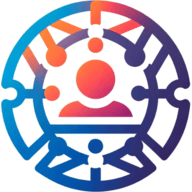6 Steps for Integrating New Staffing Technology into Workflows
Navigating the intricacies of incorporating new staffing technology into an organization's workflow can be a daunting task. This article demystifies the process by offering pragmatic steps backed by the knowledge of industry experts. The insights provided cover everything from the importance of employee involvement to the necessity of continuous support post-implementation.
- Involve Employees as Beta Testers
- Communicate Purpose and Provide Structured Training
- Engage Team Members in Tool Selection
- Create Role-Specific Training Modules
- Include Key Team Members in Pre-Launch
- Ensure Thorough Training and Ongoing Support
Involve Employees as Beta Testers
Integrating a new staffing technology tool into your workflow starts with making your employees part of the process. Treat them as 'beta' testers and involve them in shaping how the tool works within your company. Give certain team members ownership of tracking issues and reporting bugs. When employees feel like they have a role in improving the tool, they'll be more invested in using it. The key is to align your goals as a manager with the goals of your team. If they see the tool as something that helps them, rather than just another management decision, adoption will be much smoother.
Training sessions are critical, but they need to be structured in a way that makes learning feel manageable. When we launched new technology at Parachute, we made it a priority to set aside time for training, feedback, and open discussions. Weekly check-ins helped keep the new tool at the forefront of people's minds. We also created a dedicated chat channel where employees could ask questions, share discoveries, and troubleshoot together. This kept the learning curve from feeling overwhelming and made the transition feel more like a team effort rather than a top-down directive.
It's also important not to disrupt what your team already does well. New technology should make their jobs easier, not more complicated. When we introduced a new system for tracking client issues, we didn't change our core approach to customer service. Instead, we focused on how the tool could save time and improve response speed. Employees need to understand that their expertise remains valuable and that the new tool is there to support them, not replace them. Remind your team that they are still the CEOs of their roles, and show them how the new technology helps them work smarter, not harder.

Communicate Purpose and Provide Structured Training
Successfully integrating a new staffing technology tool requires clear communication, structured training, and strong internal advocacy.
The key is to establish a clear purpose for the tool from the start--emphasizing how it enhances efficiency and productivity rather than causing disruption. To ensure a smooth transition, we provided both formal and one-on-one training sessions with our vendor and internal tech resources, allowing employees to get hands-on experience and understand how the tool directly benefits their daily tasks. Identifying and empowering power users early on also proved invaluable, as their successes helped drive wider adoption and interest among their peers. Additionally, we've designated "tech advocates" within each division of our company to serve as the first line of support for new processes, helping troubleshoot challenges and reinforce best practices in real time.
By combining structured training, transparent communication, and peer-driven success stories, organizations can effectively implement new technology while fostering engagement and buy-in across teams.
Engage Team Members in Tool Selection
Do your research and ensure you're selecting the best tool for your needs. A successful integration starts long before implementation--it begins with involving the right people in the decision-making process. Engage team members from different roles early on, gathering their insights and concerns to ensure the tool aligns with their needs.
Getting buy-in from your team is critical. When employees feel like they've had a say in selecting the new technology, they are far more likely to embrace it rather than resist the change. Transparency about the benefits and impact of the tool will help build trust and enthusiasm.
Once the tool is selected, invest in proper training. A well-planned onboarding process ensures that everyone understands how to use the technology effectively. But training doesn't stop at rollout--continuous follow-up is essential. Regularly check in with your team to gather feedback on what's working and what's not. Encourage open discussions, address concerns, and refine processes as needed.
By actively listening to your team and optimizing based on their input, you not only improve adoption but also maximize the tool's impact on your workflow. Successful integration isn't just about the technology--it's about the people using it.
Create Role-Specific Training Modules
Invest in creating role-specific training modules rather than generic onboarding. When implementing our new scheduling software, we developed separate training paths for sales staff, warehouse personnel, and installation teams, focusing on only the features each role needed daily. This reduced resistance by making the technology immediately useful for specific tasks. We also designated "power users" from each department to champion the tool and provide peer support, which accelerated adoption by 40% compared to our previous technology rollouts.

Include Key Team Members in Pre-Launch
My number one tip for introducing a new staffing technology tool into an existing workflow is to get the team involved early on. When we brought in a new scheduling and time-tracking tool we had key team members in for demo sessions and feedback meetings before the full launch. This way we could identify potential pitfalls and get everyone on board. To make the transition smooth we provided step-by-step training and phased the implementation out by department first and then company-wide. This way we could address issues as they came up and not disrupt daily business. It's also important to have ongoing support so team members feel comfortable using the tool. By making the transition collaborative and incremental we were able to get everyone on board and get the most out of the tool without overwhelming the team.

Ensure Thorough Training and Ongoing Support
One tip for successfully implementing HR software in your organization is to ensure thorough training and support for employees. While HR software can streamline processes and improve efficiency, it's essential to provide comprehensive training to all users. This includes not only HR professionals but also managers and employees who will interact with the software. Clear and accessible documentation, training sessions, and ongoing support can help users understand the software's features, functionalities, and best practices. By empowering employees with the knowledge and skills to leverage HR software effectively, you can maximize adoption, minimize resistance, and achieve successful implementation.




